research articles, art, quotes, and pictures of all thing wildlife
Don't wanna be here? Send us removal request.
Text
the problem i have with the whole "humans and nature as opposed and mutually exclusive forces" style of environmentalism is that it discourages people from a sustainable, mutualistic relationship with the ecosystems around them, because getting resources from an ecosystem is Bad. Therefore it requires you to think that parts of Earth that provide resources are not ecosystems.
this is where you get unbelievably stupid crap like the "half earth" project that proposes "protecting" half of Earth's land mass as nature preserves, never mind how we choose what half or what happens to the other half.
this type of environmentalism literally encourages people to think of their own presence as excluding or cancelling out "Nature."
And so people think of their lawns as Not Ecosystems, as Not Nature, so they cannot think "How do i live in right relationship with my ecosystem, as its caretaker?" This is death to ecological thinking.
The lawn was consciously created by intention and design, with heavy machinery that was manufactured, sold, and operated, it is not spontaneously created by fumes that the human body gives off.
You act upon the land, now time to learn what you are doing, and who you are doing it to.
3K notes
·
View notes
Text
100 solutions to global warming
This TED talk from 2018 discusses the research and conclusions from Project Drawdown. Drawdown is when concentrations of CO2 in the atmosphere begin to decline on a year-to-year basis. The Project Drawdown organization has been evaluating a variety of solutions for both reducing CO2 emissions and removing CO2 from the atmosphere. 100 solutions are described in the book that summarizes their research and evaluation. You really need to watch the video to get a good understanding of their work, but here are a few highlighted quotes from the video.
“We would want to implement these solutions whether or not global warming was even a problem, because they have cascading benefits to human and planetary well-being.” “When we implement these solutions, we shift the way we do business from a system that is inherently exploitative and extractive to a new normal that is by nature restorative and regenerative. We need to rethink our global goals, to move beyond sustainability towards regeneration, and along the way reverse global warming.”
“What surprised us, honestly, was that eight of the top 20 relate to the food system. The climate impact of food may come as a surprise to many people, but what these results show is that the decisions we make every day about the food we produce, purchase and consume are perhaps the most important contributions every individual can make to reversing global warming.”
“A plant-rich diet is not a vegan or a vegetarian diet, though I applaud any who make those choices. It's a healthy diet in terms of how much we consume, and particularly how much meat is consumed. Moreover, approximately a third of all food produced is not eaten, and wasted food emits an astounding eight percent of global greenhouse gases.”
“The single most impactful solution, according to this analysis, would be refrigeration management, or properly managing and disposing of hydrofluorocarbons, also known as HFCs, which are used by refrigerators and air conditioners to cool the air.”
“Rooftop solar comes in ranked number 10.”
10 notes
·
View notes
Text
I've heard a few people complain about mosquitoes and how they 'serve no purpose' and we'd be better off without them. They bring them up as a kind of 'gotcha' moment, but the truth is they are essential to the environment, like this post had explained so well.
Yes, they are pesty, and statistically kill more people than any other living thing, but nature doesn't revolve around making humans comfortable.

Mosquitoes actually are not replaceable in any ecosystem that naturally has them and that includes replacing them with any of the non biting species because these are the traits that make them so core to food webs:
Tiny
Can use every single pool of moisture to raise generations no matter how dirty and stagnant and low in oxygen
Can fly
Males get by on just sugars
Females take protein from larger animals to manufacture thousands more eggs
All these things combined allow thst ecosystem to make huge volumes of insects from conditions barren to most other macroscopic life. You might think there are other insects that seem to make huge massive swarms out of nothing but there's really nothing that hits all the same qualities *except other insects that also suck blood.*
It's the precise combo of being able to "prey" on things millions of times larger and breed in nothing but a few drops of filthy rainwater or the moisture in a rotten log. That's the most efficient combination for anything that size to multiply that rapidly where nothing else can even survive, except of course the things that can move in because they eat them :)
27K notes
·
View notes
Video
youtube
Wolf pups enjoying fall in the Northwoods
856 notes
·
View notes
Text

It's Friday. You love bears. There's loads of bear action to be had! Fat Bear Week is in full swing. Our boy, 747, is up today, and he's looking swol! So get your vote on and vote for your fav. Voting continues through the weekend. Vote Here: https://explore.org/fat-bear-week (Opens 9AM PST)
Check out more photos here: https://www.flickr.com/photos/katmainps/albums/ View the live webcams here: https://explore.org/livecams/brown-bears (It's dark right now.)
Donate to the Katmai Conservancy here: https://katmaiconservancy.org/donate
There are some other great Tumblr accounts out there, like @katmaibearfan, that are sharing loads of pics. Recommend checking them out.
Happy Fat Bear Week, everyone!
227 notes
·
View notes
Text
Hunters Vs Wolves
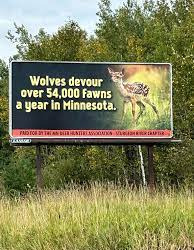
Recent billboard in Northern Minnesota, paid for by the Minnesota Deer Hunters Association, Sep. 2023.
A Sign of the Times
This photo surfaced on Facebook in a Voyageur's Wolf Project post of a billboard paid for by The MN Deer Hunters Association, blaming wolves for the loss of 54,000 deer fawns every year in Minnesota. Using words like 'devour' and the sweet image of a young fawn, the billboard appears to argue for the management of wolf populations to protect Minnesota's deer herds - for the benefit of more deer available to Minnesota deer hunters.
The Voyageurs Wolf Project brings up several concerns regarding the legitimacy of the numbers on the board, which will further be explained below. This post will also explore the research of wolf predation on deer fawns, and wolf and deer ecology.
To begin, we will start by discussing number-hurling, one of the most common misused of scientific information in the media.
Number-Hurling
Number-hurling is the act of using a number, statistic, or other forms of data to support a claim. The difference between this and sharing scientific information is that not much (if any) further information is given.
Numbers without context are arbitrarily. Take this quote: "150,000 people die every day". That seems like a lot - until you consider that the human population on Earth is approaching 8 billion, meaning .001% of the human population dies every day.
With that in mind, the next question should be: what does 54,000 mean for deer in Minnesota?
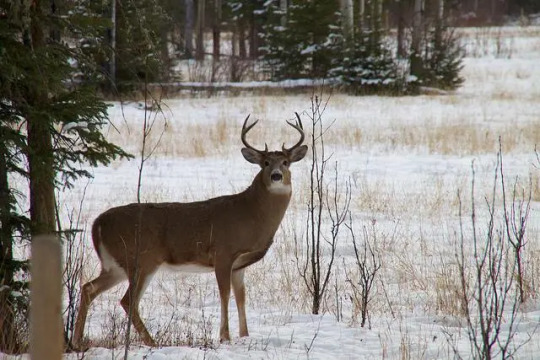
Deer, Deer, Deer
Most sources estimate Minnesota has a white-tailed deer population of about 1 million, give or take a ten-thousand. Since it is difficult imposable to count the exact number, most population information comes from statistical models and hunter harvest data.
Links to Deer Population information:
Deer Friendly
MN DNR website
AZ animals
This PDF talks more in-depth about estimating animal populations using methods like Plot Sampling and Distance Sampling. These methods involve surveying a randomly selected area for the animal. The number of animals counted is then divided by the survey area, presenting an animal density.
There are 86,943square miles in Minnesota. If we randomly selected 1-square-mile study areas across the state, and calculated 11.5 deer/square mile, that would give us about 1 million animals. The animals are obviously not perfectly spread out across the state, but we have a population estimate for statical purposes.
54,000 divided by 1 million and multiplied by 100 is 5.4. This means according to the billboard, wolves killed 5.4% of deer in a single year. But there's a problem with this math - the number 1 million references all deer, while the number 54,000 only refers to fawns. In order to find out what percentage of fawns are being killed by wolves in Minnesota, we have to estimate of the population of deer under 1 year old.
How Many Fawns are in Minnesota?
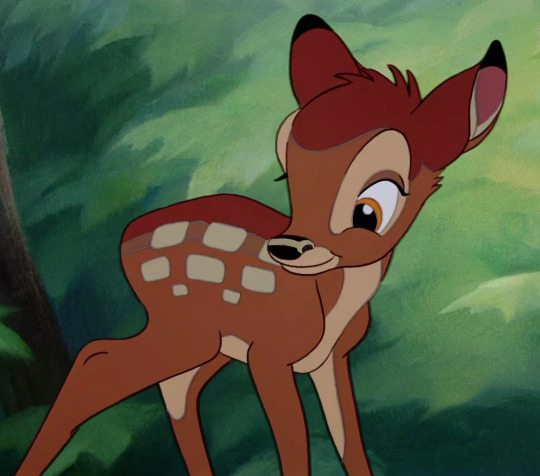
Disney's Bambi, 1942
The truth is - we don't know how many fawns are in state.
Fawn populations are more difficult to estimate than adult populations because fawns >6months old are very good at hiding. For the first couple weeks, a fawn's main survival method is curling up in the grass and hiding. Conducting any sort of survey to count fawns by hand is simply not efficient due to the number of fawns that would be missed.
A mature doe has 2 fawns per year on average (young mothers with smaller body sizes typically have 1 fawn, and older, healthier does have twins, or sometimes 3 - 4 in a single spring). So, why can't we multiple 2 fawns for every adult female deer? We don't know the number of female adult deer either.
Even if the sex ratio of a population was 1:1 (one male for every female), we don't know how many of those animals are mature. If we tried to multiply 2 by half of the population, we would be assuming that female fawns are also giving birth to two fawns. The ratio is most likely not 1:1 either. A healthy deer population has more females than males, since they reproduce polygamously. (More males than females leads to more reproductive competition, which could reduce survival rates of mature bucks).
For Heaven Sakes - What DO We Know?!
We can estimate fawn survival rates. This website from the University of Georgia talks in depth about whitetail fawn research and methods.
A common tactic is to use VIT's on mature does during the winter. In the spring when the doe gives birth, the tracker falls out and sends location data to researcher. Using the data, researchers find the newborn fawn, take measurements, and fit it with a radio collar to monitor it's movements. The collar expands as the fawn grows, and if the fawn survives after the study ends, the collar falls off. If the fawn dies during the study, the collar sends out a mortality signal after a period of non-movement.
Read more about fawn mortality studies and how they impact fawn survivability here.
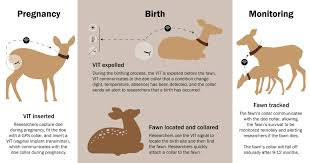
These mortality studies cannot be used in estimating fawn population for a couple reasons.
The location the fawns are found at is not random. The randomized selection of study areas prevents skewered data. If we count deer at a known feeding location, and use that survey data to estimate the population of other locations, that data would reflect only the area where deer are being feed. In other words, the population estimation would read as if deer have food everywhere - which they do not. Food resources are not equally distributed everywhere. There are places animals go often and places they avoid entirely. Randomized location provide a middle-ground. In monitoring surveys, the priority is to collect as many fawns as the survey needs. Researchers will purposefully choose locations they can catch the most does (over bait, at a water source, along prime bedding and feeding habitat).
There are a limited number of fawns. Part of the goal of a survey is to count as many animals as possible. In mortality surveys, the opposite is true - use as few animals as possible. Wildlife research is bound to the same laws and guides as laboratory animal research under the Institutional Animal Care and Use Committee (IACUC), along with state and federal regulations. The goal of any research project regarding animals is to be as non-invasive as the study allows, and use as few animals as possible, or substitutes for live animals whenever possible. Read more about the 3R's in Animal Research.
HOWEVER - data from fawn mortality studies can give us information about wolf predation.
This paper from the US Geological Survey looks at mortality rates of white-tailed deer fawns who were predated on by wolves and black bear in Minnesota in 1994. In this study of 21 tagged fawns, 51% were predated on by wolves, and 49% were predated on by black bears. This paper from Todd Fuller also points to wolves being the biggest cause of mortality on the sampled fawns.
Natural Selection At Work
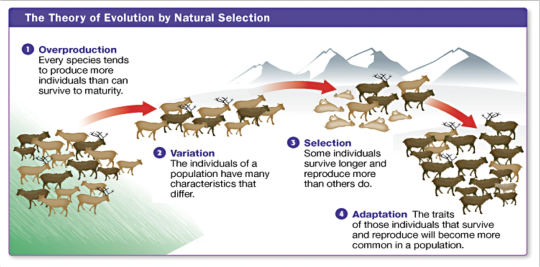
Overproduction example in caribou
By now, we've all heard of Charles Darwin and his theories of evolution and natural selection. Part of natural selection regards overproduction.
Sea turtles, rabbits, insects, and fish are all examples of animal that produce more offspring in a single breeding event than can reasonably survive. This overproduction is a natural remedy to predators who will eat the excess offspring before causing a dip in the population.
This is why researchers make a distinction between fertility - the number of young that are born to an individual, and recruitment - the number of young that reach sexual maturity. As cute as those baby animals are - they don't do much for a population until they reach the age they can breed. If a population is decreasing, fecundity, fertility, and recruitments are all factors that should be investigated.
With all that in mind, we have no idea what the population of deer fawns is in Minnesota, therefor, the number 54,000 can not give us any information, aside from the fact it is only 5.4% of the total estimated deer population.
Where did 54,000 come from?

Photo from the Voyageurs Wolf Project Trail Camera
According to the International Wolf Center, there are about 2,699 wolves (give or take 700) in Minnesota as of the 2020 Wolf Survey. We could estimate the number of fawns killed by wolves by multiplying the number of fawns an individual wolf kills by the total number of wolves. However, as the Voyageurs Wolf Project points out, that is also a difficult number to figure out.
According to a Wisconsin News article, wolves kill 17 - 20 deer per year (no distinguishment made between fawns and adults). This study from Northern Michigan University claims 12 wolves killed 217 fawns over the course of 4 years. That means that each collared wolf ate 18 fawns - over the course of 4 years. Just for laughs, if we assume each individual wolf killed the exact same amount of fawns every year, that means that one wolf killed 4.5 fawns in a single year.
Search "how many fawns do wolves kill a year" and you will find a string of news articles with 'he-said-she-said' quotes and blog threads of passionate deer hunters. When it comes to raw data from researchers in the field, the answer becomes illusive. The fact that non of these estimates repeat is as big of a red flag as you can get in the science world, as reliable experiments have repeatable data.
In their post, the VWP referenced a paper that estimated wolves killed 17-20 fawns in Upper Michigan. If there are 2,700 wolves in Minnesota, multiply that number by the number of fawns killed, and you get 45,900 - 54,000. The billboard strictly assumes that each wolf kills 20 fawns per year. However, the statistic of 17-20 fawns per wolf was pulled from an article that made no distinction between fawns and adult wolves. Not only is the 54,000 based on questionable sources, but the sources it is pulled from makes it unreliable for not distinguishing between fawns and adults.
Every Year, a Wolf Counts to Twenty and then Stops
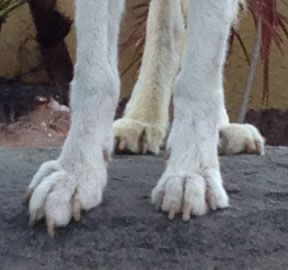
Funny enough, the billboard leads one to believe that the number of fawn killed by deer each year is a static number. It is not. How many fawns a wolf kills changes year to year, and depends on multiple factors.
In their own surveys of wolf kills, VWP saw breeding pairs kill more fawns than single wolves. This makes sense - breeding animals require higher calorie intact while pregnant and nursing.
It is also well-known that wolves change their predatory behavior depending on resource availability. In late summer, fawns are strong enough to follow their mothers instead of hiding, so wolves in northern Minnesota will turn to eating beavers, fishing, and even eating berries. Late summer is a particularly lean time for wolves, and is when most wolf pups die of starvation. This paper from Scandinavian research on wolves hunting moose determined that the age of the breeding male was a significant factor in a hunt's success, meaning older adults have more experience.
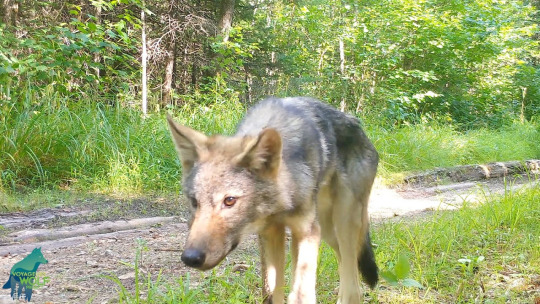
Lean Summer Pup, via Voyaguers Wolf Project Trail Cams
One important factor in fawn survival to consider is the health of the mother. Though they are born precocial, fawns are highly dependent on their mothers for the first couple of months on their lives, and typically stay with their mothers for their first year. Not only are they given food and groomed, but they learn foraging behavior and predator avoidance. This article goes into dept about how maternal health and dominance can affect survivability of fawns.
Another variable to consider is habitat. Deer can live in a wider variety of habitat that wolves and other predators can. Wolves, black bear, and mountain lions prefer habitat away from busy metropolitan areas, whereas deer can live in wooded patches of suburbs in the middle of a small city. Fawns living in these areas would not be predated on by wolves because there are no wolves around (though there are coyotes). This article talks more in depth about the different mortality rates of different habitat types of whitetail deer.
In Summary

While its known wolves consume a lot of fawns, their predation rates on fawns change through out the year, and vary by habitat, season, and experience. Fawn survival rates are also influenced by environmental factors and the health and dominancy of the mother.
The number of fawns killed by wolves each year is not a static number. There is little evidence to defend 54,000, and even if it were accurate, it is insignificant since the population of fawns and the birth rate of fawns in the state of Minnesota is unknown.
Wolves killing deer fawns in Minnesota is only one line in a vast ecological web. No single factor has ever been recorded causing a significant decline in a species. When a species is declining, there are always multiple factors at play.

Deer vs Vehicles
According to the MN Office of Traffic Safety, between 2016 and 2020, there have been over 6,000 vehicle collisions with deer on the road. 1,000 of those incidents involved serious injuries or fatalities to the people in the car.
The MN DNR website says in 2022, the harvest report was 170,000 deer taken by hunters - which is also 7% lower than the harvest rate of 2021. Even then, that number is significantly higher than 54,000.
The billboard also mentions nothing about the predation of black bear and coyote on deer and fawns. Coyotes are significant because unlike wolves and black bear, they can live closer (and even within) city limits, meaning they can affect deer populations in places wolves and bear cannot.
The Bigger Message
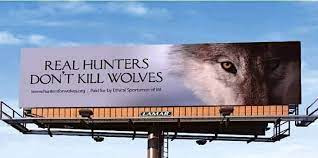
The opposite of the previous billboard.
The purpose of this post is not to villain-ify the MN Deer Hunters Association or glorify wolves, but to encourage people to ask bigger questions when being thrown vague information.
**Opinions Below**
Wolves serve a role in the ecosystem that no other species, including humans, can fulfil. While they should not be evicted from the landscape, this doesn't mean hunting them should never be allowed.
As important as wolves are, they do often cause conflict over livestock, and people's general fear of the animals. Allowing controlled hunts may mitigate potential conflict as well as reinforcing a fear of humans - a thing that may help keep the species alive.
The bottom line - whether or not we hunt wolves is a decision based on our values of wildlife. We need to ask ourselves: what is important to me? Why do I think that is important? What is the information I base my values on?
Answering those questions is the first step we can all take to protect ourselves against number-hurling and make informed decisions about ourselves and our world.
#wolves#wildlife#wolf#wolfpacks#animals#carnivors#science#ecology#research#wildlifebiology#biology#nature#deer#white tailed deer#minnesota#ecosystems#biodiversity#conservation#long post#long reads
1 note
·
View note
Text
Journal Highlight: What Determines a Successful Hunt for Wolves?
#biology#science#wildlife#animals#wolf#wolves#wolf pack#moose#deer#roe deer#scandanavia#nature#research#interesting#education
0 notes
Text
How to Keep an Indoor Cat Happy
Presented by Jackson Galaxy, Cat Expert
youtube
Points of video:
Cat-ify your home - give them places to climb, vantage points, and multiple pathways to cross rooms.
Build a cateo - an enclosed outdoor space where your cat can experience the outdoors safely.
Play play play with your cat!
Clicker training
Harness training - take your cat on walks!
Consider getting your cat a friend! If adopting a kitten, you may want to adopt two.
Keep a routine with your cat - feed/play at a specific time
Spay/neuter your cats! This will take care of their hormonal drive to propagate and fight with outdoor cats.
And of course - Spend time with your cats!
Jackson Galaxy has a Youtube channel with lots of videos on training, care, and facts about cat biology and behavior!
6 notes
·
View notes
Video
youtube
(via Northern Minnesota researchers find treasure after sorting through 7,000 wolf poops)
Researchers in Voyageurs National Park in northern Minnesota had collected a total of 7,000 individual wolf scats since 2015. Read the full news article here.
An animal’s scat can reveal a lot about an animal’s diet and physical health. Scat and droppings can also be used as sign to identify animals.

If you’re not afraid to pick it apart, you can find traces of what an animal last ate in their feces. Wild carnivores will have bits of hair and bones, and wild canines may even have berries and fish scales. Domesticated dogs will usually have kibble. Omnivores and herbivores may have berries, nuts, and other plant matter.
Just remember to wash your hands after!
1 note
·
View note
Quote
We Build Ourselves from Soil, then Turn Around and Call it Dirt

#enviromental#enviromentalism#wildlife#science#earth#earthscience#soil#soil science#ecology#inspiration
0 notes
Text

October 28, 2021 - Tawny-browed Owl (Pulsatrix koeniswaldiana)
These owls are found in open woodlands in parts of Brazil, Paraguay, and Argentina. They are nocturnal, hunting from perches in the canopy for small mammals, birds, and large insects. Nesting in cavities in trees, females incubate clutches of two eggs. Both parents feed the chicks. Though they are classified as a species of Least Concern by the IUCN, their population is declining due to habitat loss.
218 notes
·
View notes
Text
How wolves deal with their human neighbors
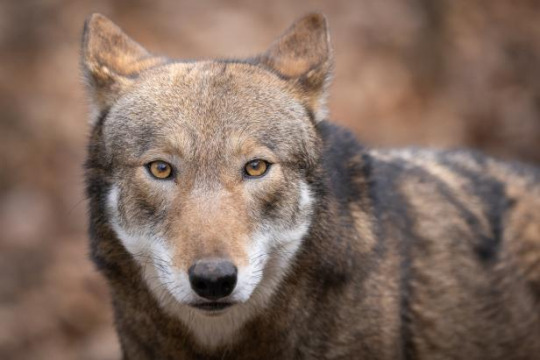
Full research article: Habitat selection of a large carnivore, the red wolf, in a human-altered landscape
From 2007 to 2010 on an island off of the coast of North Carolina, 17 juvenile and 17 adult red wolves (Canis rufus) were captured using foot-hold traps and fitted with a radio collar. The goal was to study red wolf habitat selection in an areas of both high and low human density, ultimately to aid the conservation and management of the highly endangered large predators.
**The article goes into depth about how wolves were classified by age, how data was mitigated for biases, information about the study area, and how habitat types were classified into unaltered and human-altered landscapes**
What the researchers found (based on their data collected) was that red wolves changed the kind of habitat they selected for based on human density. In areas of low human density, wolves were more likely to select habitat near roads and agricultural (human-altered) lands. In areas of higher human density, roadways and developed lands were more often avoided for previously ‘second-choice’ habitat types.
Ultimately, the results are optimistic for large carnivore conservation, as if provides evidence that red wolves may be able to adapt to surviving in a mosaic of human-altered and natural lands.
This type of research is significant, as unaltered habitat types are declining. Many large predators (wolves, cougars, grizzly bears) depend on large plots of land for food. Expansion of agricultural and developed lands means predators either figure out how to live in them or perish. Knowing that red wolves can adapt to more fragmented habitat is one step forward in their conservation. The rest comes down to mitigating wolf and human conflicts, and ultimately gaining public support for wolf conservation - which is a whole different, ugly battle.
217 notes
·
View notes
Text
Understanding Economics, from Marilyn Waring
Marilyn Waring demystifies the language of economics by defining it as a value system in which all goods and activities are related only by their monetary value. She claims that monetary exchange with results in unpaid work—usually done by women—is unrecognized, and activities that may be environmentally and socially hazardous are regarded as productive. With irony and intelligence, she maps out an alternative economic vision based on the idea that time is the one thing we all have to exchange. Shot in Canada, New Zealand, New York City, the Persian Gulf, and the Philippines, this classic film is an entertaining primer for anyone who suffers from what Waring calls “economics anxiety.” (94 minutes)
https://fod.infobase.com/p_ViewVideo.aspx?xtid=52054
0 notes
Text
Indigenous people have the right to withhold historical knowledge:
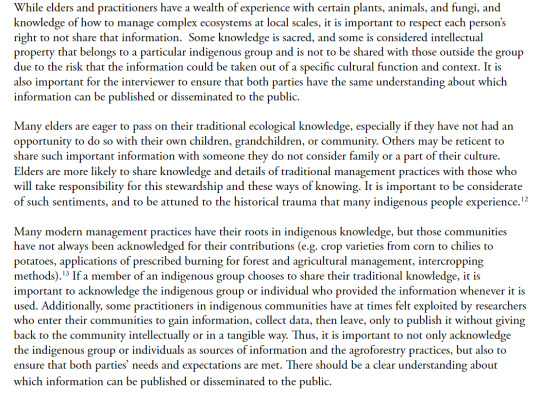
More people should understand this.
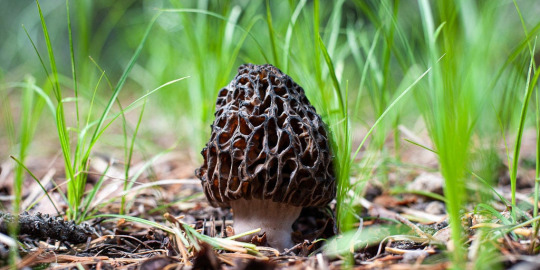
2 notes
·
View notes
Text
Earth’s History Explained by a Football field.
When talking about the Earth’s history, we throw big numbers around - a million, a billion, 400 million. Have you ever taken a minute to consider just how big those numbers are? Think about a single year. 365 days. 12 months. Looking back, they seem to fly by, but as you sit here and read this, a moment can last forever, and events you have in the future, for instance, and trip planned for next year, may seem like it will never come. Think of all the things that has happened to humanity in the hundred years between 1900 and 2000. The invention of electricity, two world wars, putting a man on the moon, the internet. Can you image two hundred years? For hundred? How about a million? This video really puts in perspective what those numbers mean, and (roughly) what the history of the Earth looks like.
youtube
0 notes
Text
Learn about Wildlife from Trail cams
Are you curious about the animals in your neighborhood? Do you keep seeing a mysterious set of tracks by your house? Have a large patch of public woods nearby? Get a trail cam!
Trail cams are a great way to learn about your local wildlife. They are available at most major outdoors shops, and come with all sorts of options such as night vision.
You can learn so much about animals that you otherwise can’t get close to. Date and time stamps allow you to know exactly when an animal passed through. If you really know your stuff, you can upload the data into a program like R that can turn the data into graphs to show activity peaks of certain animals (knowledge of coding is helpful).
But you don’t need to be an expert to buy a trail cam, set it up, and learn from the photos. Trailing cam are especially helpful for hunters or trackers, or if you just want to practice identifying tracks. As long as the photos are clear, you can identify an animal and then study the tracks or trail it left behind!
6 notes
·
View notes
Text
Mouse predation on Laysan Albatross
youtube
Mice and rats were introduced to Midway Island in the Hawaiian archipelago by navy ships. At first, it was the rats that were attacking the birds until researchers and wildlife managers put forth a successful obliteration attempt. Now, only invasive mice are left, originally thought to not be a problem to the nest colony were 95% of the population of Laysan Albatross nested. But a recent discovery of strange bloody marks on birds presented a new problem of mice. Another removal plan was created to protect the colony set to start in 2020, but was halted by the pandemic.
0 notes